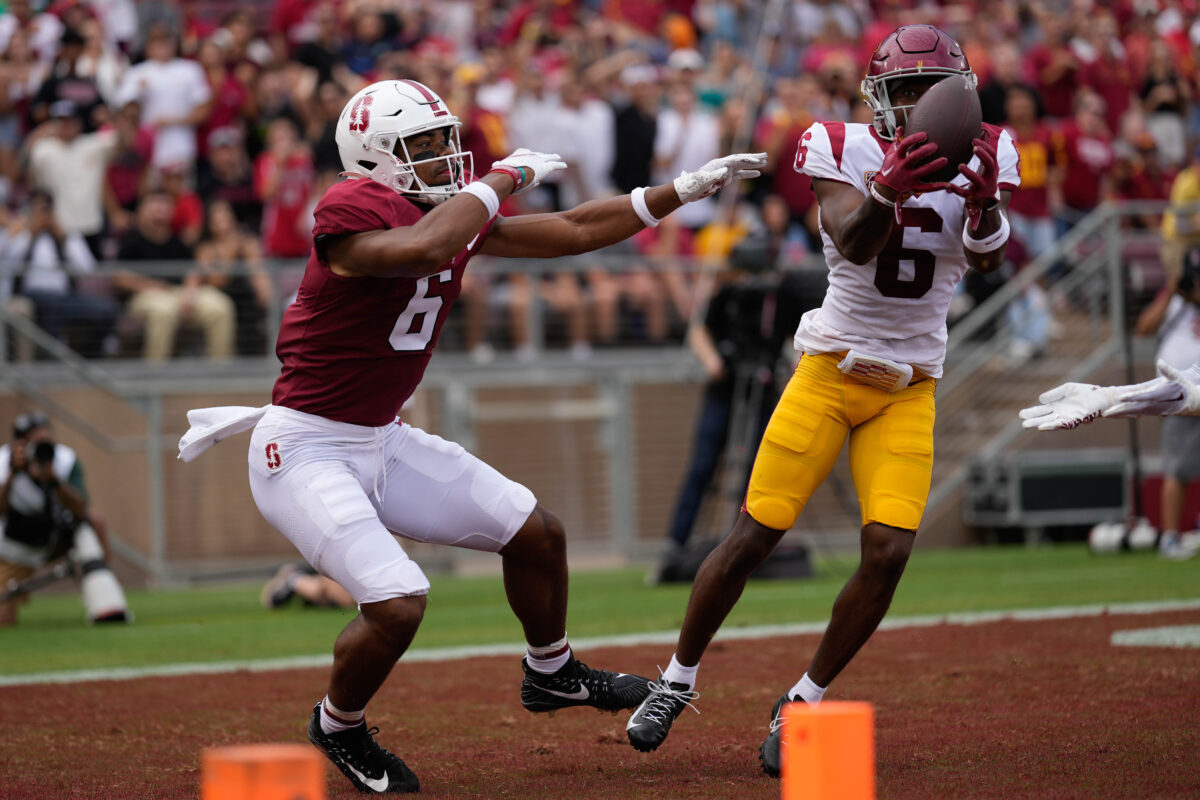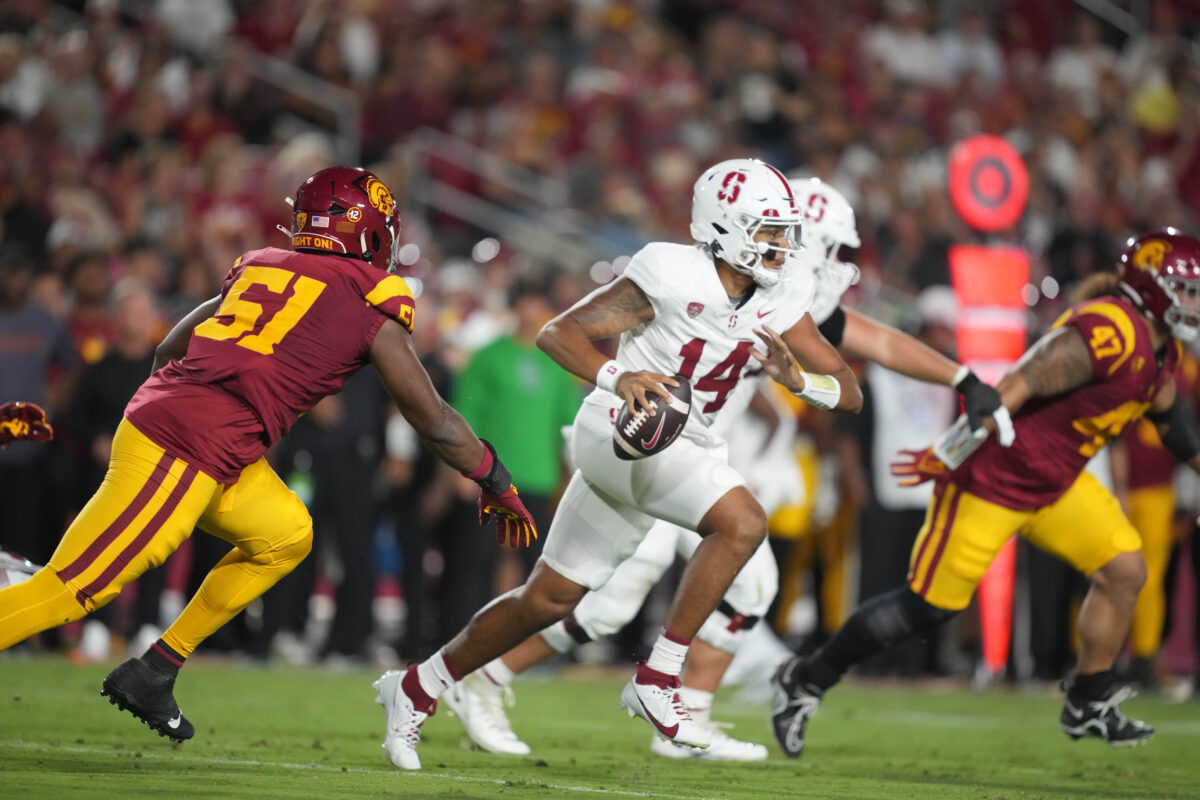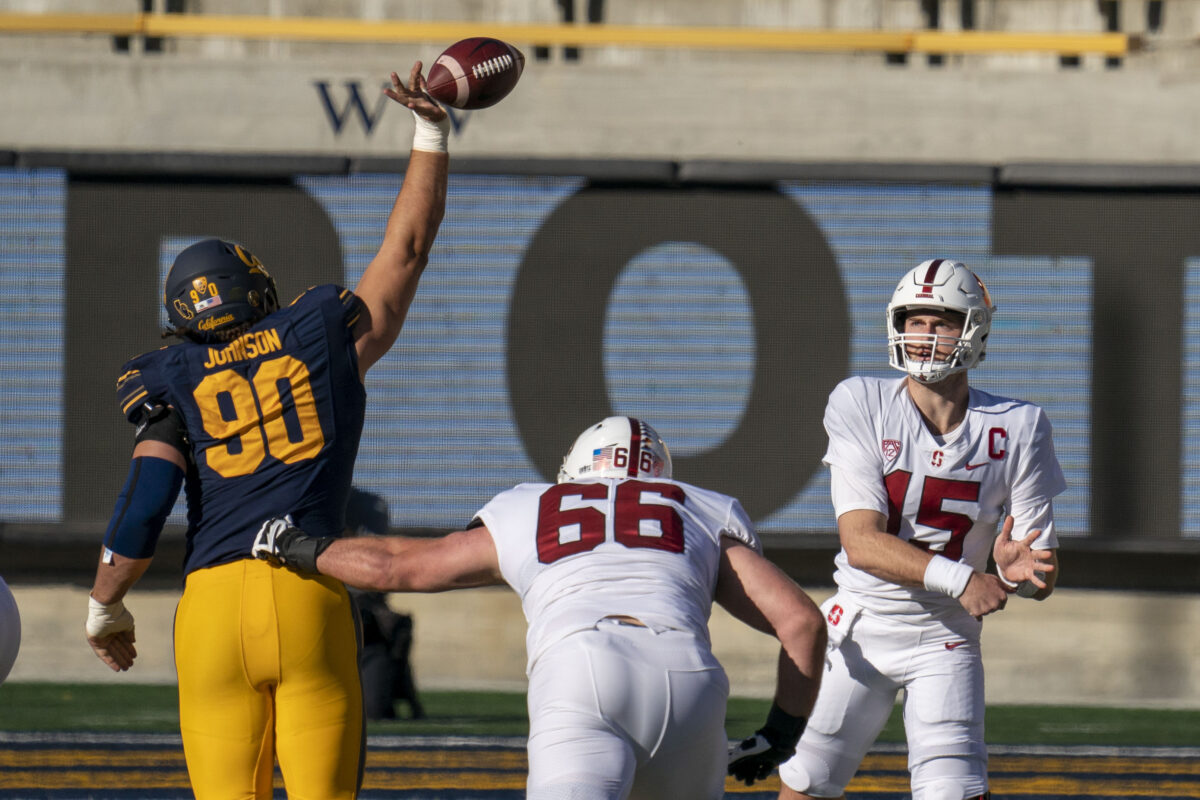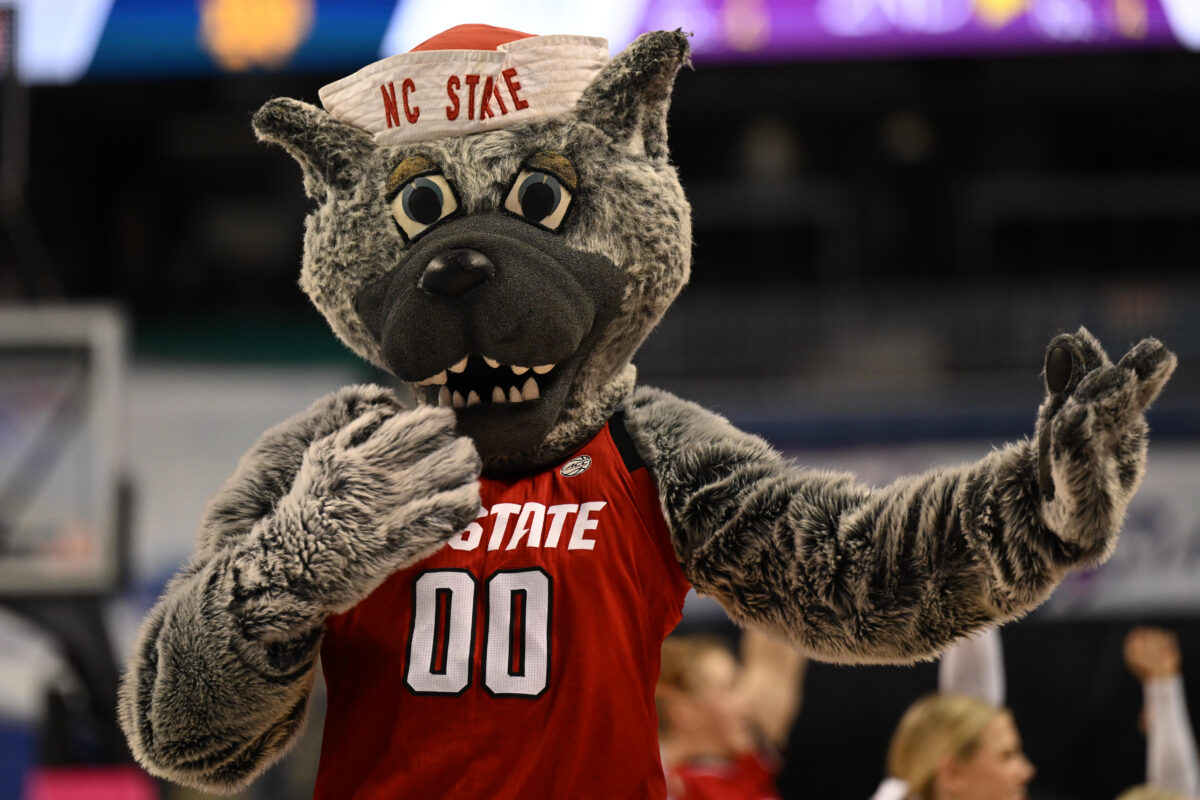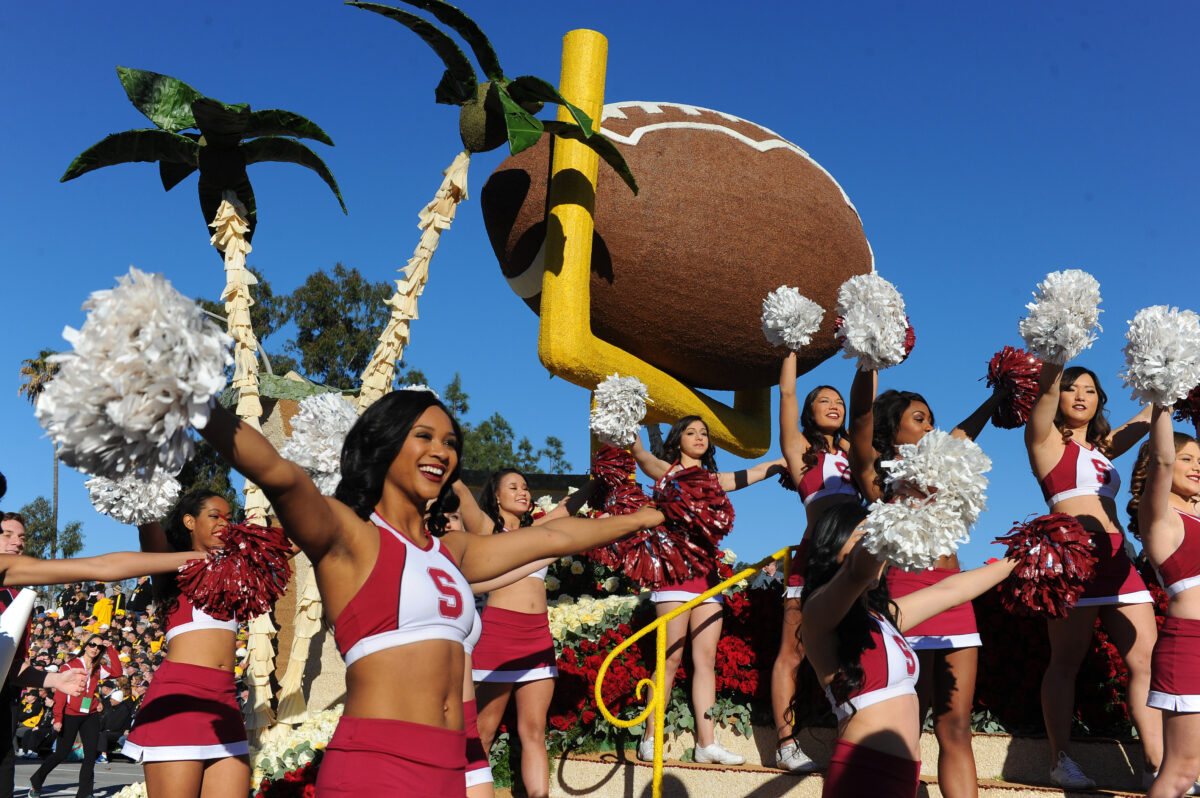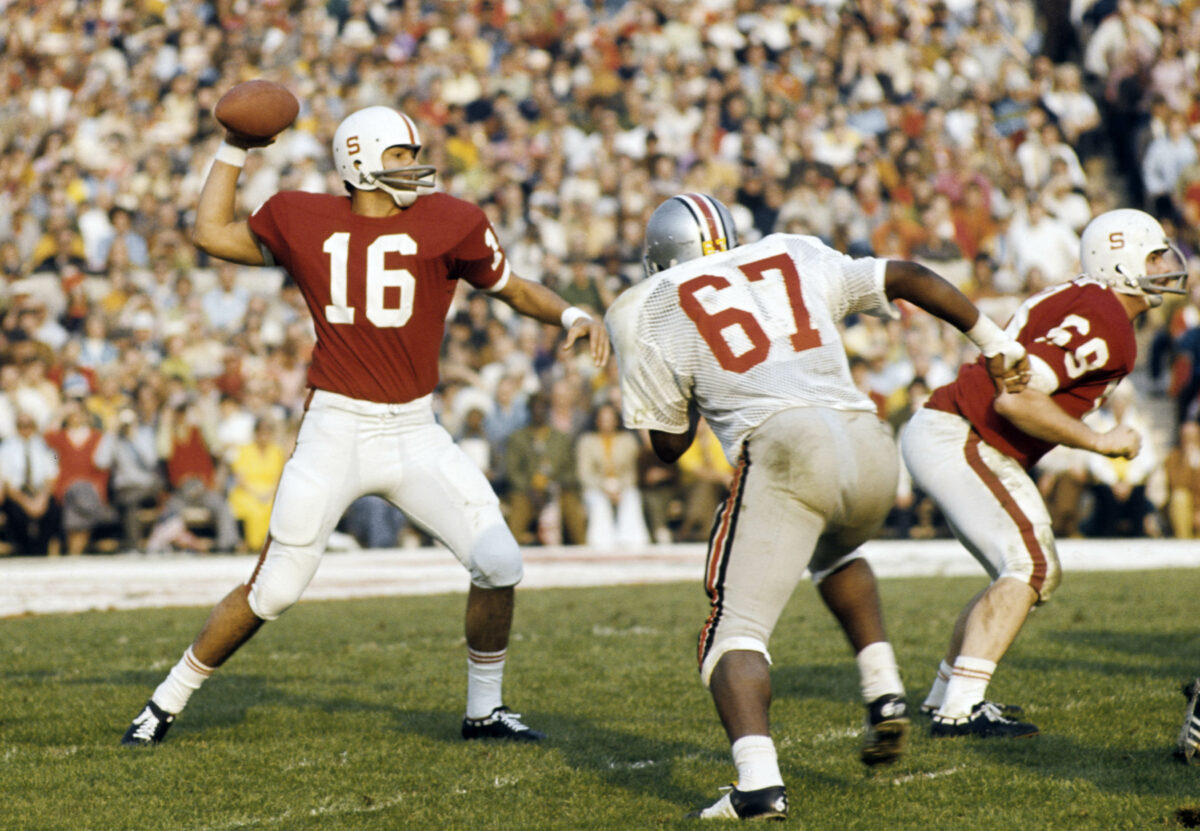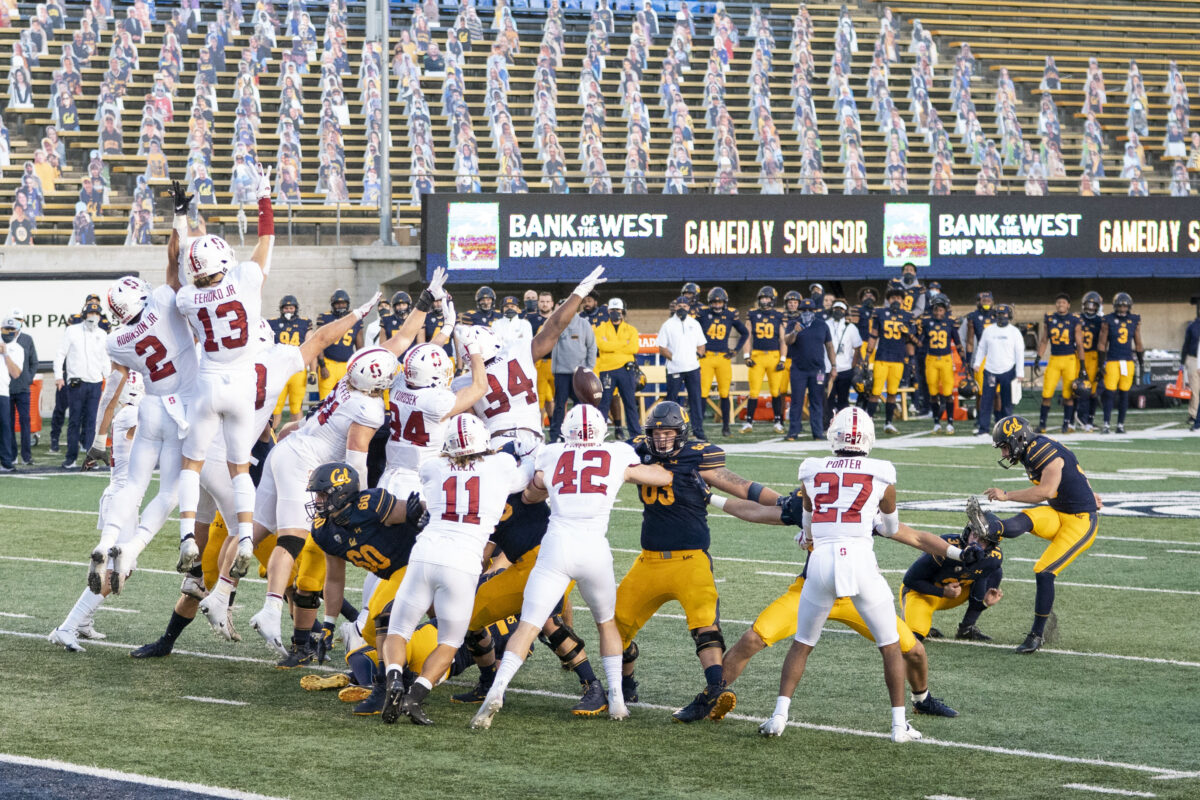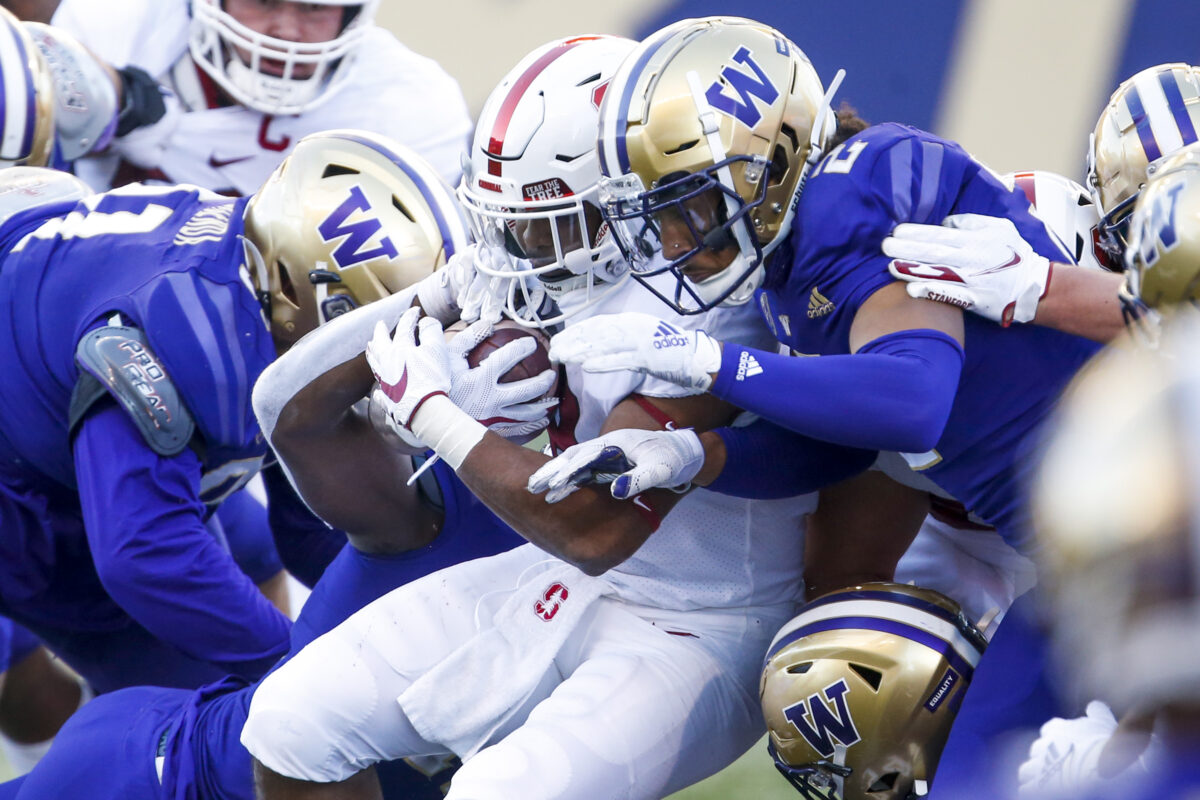1970 #Stanford Heisman winner Jim Plunkett took down No. 2 and unbeaten Ohio State in the 1971 Rose Bowl.
Stanford could soon be out the door to the ACC. We will have to wait to find out. However, nothing will change the reality that the Indians — as they were known in 1970 and 1971 — won the Pacific-8 Conference championship and then beat the giants of the Big Ten in the 1971 and 1972 Rose Bowls.
USC was a dynastic power in this era, but the Trojans had a brief lull in the 1970 and 1971 seasons. USC finished in the top four of the national polls in three straight seasons, from 1967 through 1969. The Trojans made the Rose Bowl in four straight seasons, from 1966 through 1969. Mike Garrett won the school’s first Heisman Trophy in 1965. O.J. Simpson followed in 1968. USC won the national title in 1967 and played Ohio State for the 1968 championship in the Granddaddy. West Coast football was dominated by USC in the late 1960s. However, the 1970 team stumbled to a 6-4-1 mark, and the 1971 team did the same.
Stanford stepped through the portal and seized the opportunity to play in Pasadena. The Indians won consecutive conference titles. In 1970, quarterback Jim Plunkett won the Heisman Trophy.
When Stanford entered the 1971 Rose Bowl, it faced No. 2 and unbeaten Ohio State at the height of its powers under legendary head coach Woody Hayes. Stanford was ranked outside the top 10. However, the Indians posted 14 fourth-quarter points to stun the Buckeyes in Pasadena, 27-17.
The next year, Stanford was able to repeat as conference champion with USC still fumbling around. This time, the Indians met Michigan and its own legendary coach, Bo Schembechler, in the Granddaddy. Michigan was ranked No. 4, and Stanford was again ranked outside the top 10 heading into the game.
It didn’t matter. Stanford prevailed 13-12 in a wild sequence of events late in regulation. Michigan took a 12-10 lead on a very controversial safety with just over three minutes left. Forward progress should have been ruled on the play and Stanford should have had the ball on its own 3-yard line. The Indians were in huge trouble, but they got a defensive stop after the free kick. They drove three-fourths of the field and were able to kick a 31-yard field goal for the win with 12 seconds remaining.
The Pac-8 regularly won the Rose Bowl in the 1960s and 1970s, but most of the time it was USC doing the winning. The 1971 and 1972 Rose Bowls showed the non-USC programs in the West could hold their own against Ohio State and Michigan.
[lawrence-auto-related count=1 tag=696092282]
